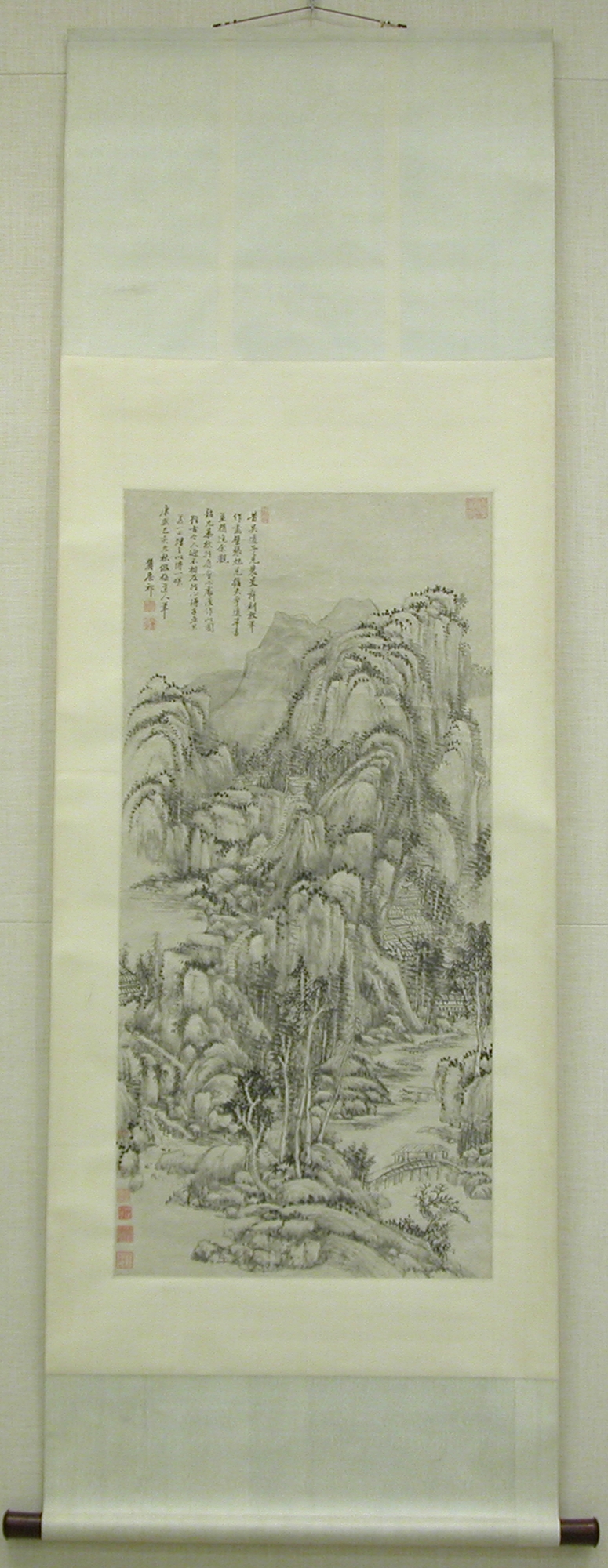Landscape after Wu Zhen
Wang Yuanqi Chinese
Not on view
According to his inscription, Wang Yuanqi did this landscape in the manner of the Yuan painter Wu Zhen (1280–1354). But in Wang's interpretation, Wu Zhen's distinctive idiom of dragged texture strokes and dotting has been used to create a densely patterned scene in which foreground and distant mountains are fused into a continuous "dragon vein" of abstract compositional energy.
Wang's poem reads:
In olden days, Wu Daozi [active 8th century] saw Fei Min perform in a sword dance, and, letting his brush fly, he did a wall painting. When Zhang Xu [active mid-8th century] saw the way the carriers balance the loads on their poles, his "draft" script became even more refined. When I saw Shao Jiuji, I joyously had a sudden insight and casually did this picture. Although past and present painters cannot reach each other, yet what the mind comprehends and the hand responds to—this means the same for all. I am giving this away for a laugh.
(Ashwin Lippe, trans., in Laurence Sickman, ed., Chinese Calligraphy and Painting in the Collection of John M. Crawford, Jr. [New York: Pierpont Morgan Library, 1962], p. 164)
Due to rights restrictions, this image cannot be enlarged, viewed at full screen, or downloaded.
This artwork is meant to be viewed from right to left. Scroll left to view more.



